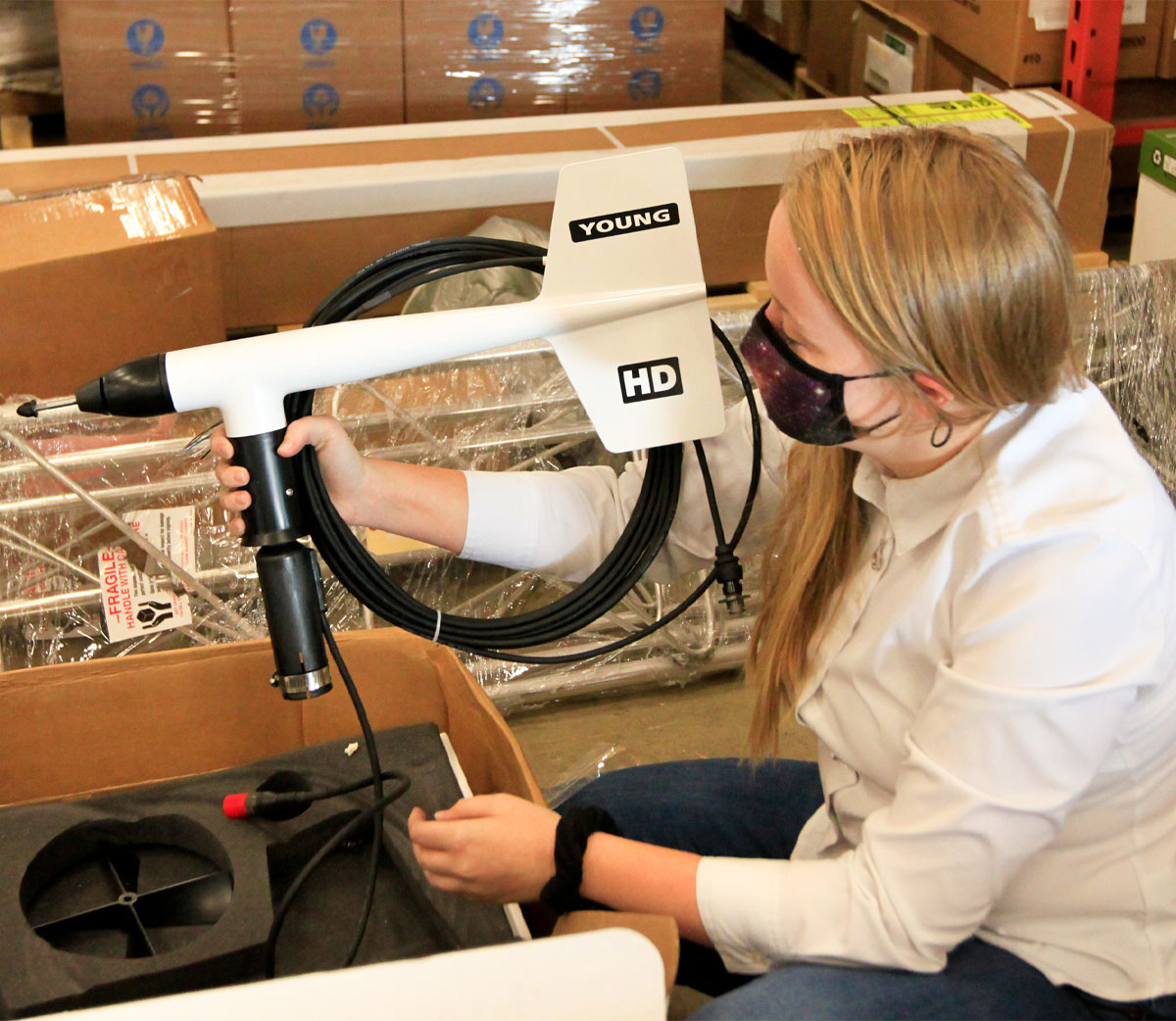NASA Partners with SU to Improve Weather Data Gathering for Enhanced Forecasts
 SALISBURY, MD---Recognizing the need to improve forecasts for the Delmarva Peninsula, NASA’s Wallops Flight Facility on the Eastern Shore of Virginia has embarked on an effort to improve gathering weather data, which is vital to enhancing forecasts.
SALISBURY, MD---Recognizing the need to improve forecasts for the Delmarva Peninsula, NASA’s Wallops Flight Facility on the Eastern Shore of Virginia has embarked on an effort to improve gathering weather data, which is vital to enhancing forecasts.
On the Delmarva Peninsula, located between the Chesapeake Bay and the Atlantic Ocean, the weather is sensitive to not only the large bodies of water that form its borders but also the Appalachian Mountains to the west and the many wetlands throughout the region.
This sensitivity makes it difficult for local meteorologists to create highly accurate forecasts. Additional weather stations would provide data to enhance forecast model accuracy.
“Having accurate forecasts and nowcasts is vital in rocket and aircraft operations at Wallops,” said Ahmed Fadl, Wallops' deputy chief for flight safety. “We saw a need to increase data across the region by connecting local weather stations on the Eastern Shore of Maryland and Virginia to a nationwide network. Salisbury University will operate and maintain the first of these new stations.”
Called the Delmarva Meteorological Mesoscale Network or Delmarva Mesonet, the instrumentation in Maryland and Virginia will be integrated with the existing Delaware Environmental Observation System or DEOS to fill gaps and provide essential data that has been missing.
“Much of the effort to bring the Delmarva Mesonet to fruition was accomplished by two university student interns this past summer and fall,” Fadl said. “Samantha Koehler, a senior at Salisbury University, and Eric Allen, a graduate student at the University of Delaware, brought to the project their knowledge of the region, weather instrumentation and forecasting, and the existing networks to develop the Delmarva Mesonet stations and establish support by Federal and state agencies and universities.”
There are too few stations located in the targeted region of Maryland and Virginia. An increase in the measurements will help improve real-time monitoring and forecasting and provide valuable data for Earth Science research.
“The Mesonet has applications beyond just weather forecasting,” Koehler said. “The Delmarva Mesonet will benefit NASA and provide an invaluable asset to Federal, State, and local entities, as well as the community at large.”
Local benefits of the network include:
- Emergency Response Management
- Educational Resource
- Public Safety
- Agricultural Management
- Weather Modeling and Forecasting
- Energy and Utilities
- Transportation
- Environmental Quality
“Twenty-eight states are part of the National Mesonet Program with more than 1,750 stations. The Delaware Environmental Observation System embodies the “nationwide network of networks” approach because they own and operate a growing 57 meteorological station network, said Allen.” The DEOS, the densest network in the country per square mile, is part of a broader 80-plus station environmental monitoring network that is operated and maintained by the Center for Environmental Monitoring and Analysis at the University of Delaware. “The Delmarva stations will build upon the existing Delaware Mesonet expanding the coverage of the mid-Atlantic region.”
The Delmarva Mesonet stations will measure:
- Air Temperature
- Humidity
- Wind speed, Direction, & Gusts
- Precipitation
- Soil Temperature & Moisture
- Atmospheric Pressure
- Solar Radiation
Koehler said, “As the project developed we saw the value in placing the stations at educational facilities. This was one of the reasons Salisbury University was selected for hosting the first station in the Delmarva network.”
“Having the station at Salisbury will have many applications for students in our meteorology, physics and other science programs, said Alex McCombs, SU assistant professor of geography. “Students will be able to use the data in their studies and also will be able to get hands-on experience in working with the instruments.”
“The Mesonet station has arrived at Salisbury University and, with the support of the University Delaware, we are in the process of testing and calibrating the instruments. The station is expected to be installed in early 2021 and the data will be available in the Delaware Environmental Observing System shortly after that,” McCombs said.
The Delmarva Mesonet promises substantial improvements in forecast modeling that would support launch and flight operations at Wallops.” said Doug Voss, deputy chief of the Wallops Range and Mission Management Office. “This concept was initially approached as an instrumenting of only the area around Wallops Flight Facility, but our early discussions with Wallops range meteorologists and Goddard Space Flight Center scientists revealed that a larger area of measurement was needed to create effective forecast models. This realization opened up the door for partnering opportunities in many sectors apart from the Wallops range.”
